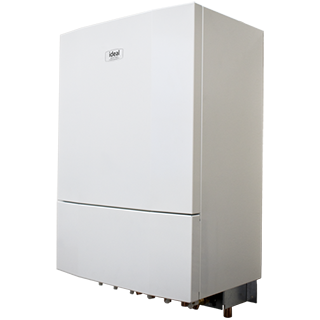One of the key reasons why district heating networks will be so central to the UK’s net zero strategy is because they are so versatile.
They are suitable for all building types, from bungalows to high rise flats, businesses and public buildings, regardless of their age and fabric.
Indeed, a mix of different building types in a heat networks can be of benefit as it means demand for heat is spread through the day and year, so there aren’t sharp peaks in demand at certain times.
They are energy agnostic too; heat networks don’t care where the heat that powers the system comes from.
That’s enabling some really creative solutions to cut emissions from heating our buildings, which generate around a fifth of the UK’s total emissions [1].
Free energy
In Gateshead, for example, the local authority is developing a plan to use geothermal energy from a former coal mine to heat up to 1,250 new homes.
It’s an idea with a lot of potential – a quarter of UK homes and businesses sit on former coalfields [2].
Over time, the disused mine workings flood and the water is warmed by the earth, providing a free source of clean renewable energy.
The Coal Authority reckons mines are one of the UK's biggest clean energy sources, storing more than enough spare heat to heat every home in the UK.
At the same time, the first stage of a network that harvests heat from the London Underground is already in operation, while other sources of waste heat being explored include data centres, sewage works, incinerators and electricity substations.
Lower limits
Heat networks can even integrate several different sources of energy, including Combined Heat and Power and heat pumps, and will likely have a gas boiler as a back up to ensure the system is robust and resilient.
The only limit is the primary temperature that’s provided to the Heat Interface Unit that that lives in the end user’s property and works to transfer heat from the heat network into the building.
And modern heat networks can operate on lower temperatures than ever before.
Even at primary temperatures of 60 to 70°C they can provide satisfactory thermal comfort and heat domestic hot water at 50 to 55°C.
A roadmap to revolution
Whatever the primary heat source, the efficiency of the system is driven by how well it is designed, commissioned and constructed.
This was lacking in some legacy systems, particularly in regard to insulation across networks or minimising the lengths of lateral pipe runs to appliances in buildings, which is now contributing to sub-optimal performance in some instances.
However, help is at hand in the new expanded CP1 code of practice, published by the Chartered Institution of Building Services Engineers (CIBSE) and The Association for Decentralised Energy (ADE) in January this year.
It lays out best practice for every stage of the heat network process, from building the business case, design and commissioning to installation, operation and testing.
The code includes minimum standards for everything from insulation thicknesses to metering and includes a toolkit for checking compliance.
There’s no quick fix to efficiency, but CP1 provides a route map for those forward-thinking developers who are playing their part in the UK’s heat revolution.
Charlie Mowbray, Commercial Product Manager


